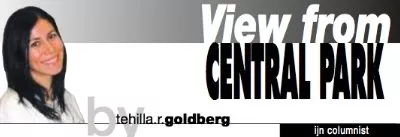Genealogy is almost always a joy for me to talk and write about — today, not so much.
I recently returned home from a tragedy that relates to family history that I want to wish away. Earlier this month, an unknown person murdered my nephew, Joshua Smelser in Detroit, and my family is still trying to come to terms with it. His parents are dealing with their worst nightmare, and I drove there to help with the aftermath of the unimaginable.
As you might guess, this is not something you would typically read about in a genealogy column, and I debated writing about it. But more than occasionally, genealogy is about tragedy, usually long ago and far away — it’s not usually this close and personal.
So this has compelled me to talk about a few important genealogical records that I would have preferred to address in later (and less personal) columns — death records.
I’ll start with something I just wrote, namely obituaries. These records are most common starting in the 20th century, although they existed in a briefer form previously.
Death notices are often found in addition to, or instead of, obituaries. Their most common format is in newspapers, but that has been changing in the last 20 years, and now more are increasingly appearing online. As newspapers need more sources of revenue, obituaries have become quite expensive, resulting in more obits appearing only online. [Editor’s note: The Intermountain Jewish News still does not charge for obituaries.] Memorials and tributes are closely related, and they too are increasingly found online.
Newspaper research is yet another column in the future, but clearly obituaries are an important source of that research. However, it’s important to realize that these are generally not objective, fact-checked articles — they are usually written by grieving relatives or funeral homes. [Editor’s note: Local Intermountain Jewish News obituaries are professionally written by the newspaper staff.] While you can’t treat them as absolute truth, they can lead to other more objective records.
Perhaps more important, they can tell a person’s life as other official records often can’t. An important facet of genealogy is telling a person’s life story, not just dates and places.
When I arrived in Detroit to face the unfathomable, I quickly saw there was only one brief online article about Joshua’s death, without his name. I didn’t find this surprising, given the homicide rate there, but still I couldn’t let his death go unrecognized. Because I was a journalist in another life, I took the unusual step of writing a press release about his death and life (in that order), which later served as a template for my obituary.
Needless to say, press releases rarely serve as a genealogical resource, but if used by a news outlet, it can be. In this case, a local TV station (the same one with the brief article) picked up my press release and within two hours called and then came out and did a story on Joshua by interviewing his family (including me.) Unlike many fear-inducing stories about homicide, the journalist focused on his life, rather than his death, which is what we preferred — perhaps due to my press release.
Shortly after, the same station ran a slightly longer article about Joshua again, mostly focusing on his accomplishments.
From an objective perspective however, they relied almost completely on my press release and the statements of his grieving family, rather than any fact checking. I don’t fault them for this — in fact, our family was grateful to see his life acknowledged, and a sensitive if not brief insight into his life. But it’s as an example of how, as genealogists, we need to go beyond obituaries, even published articles — and do our own fact-checking by verifying with other sources.
A few days later, I turned the press release into a memorial I created for another important genealogical resource: Find A Grave. As the name implies, this site has millions of graves throughout the world, but mostly in the US, which allows photos and memorials to be posted about a deceased person, by anyone. Often, volunteers are going into cemeteries and photographing large number of headstones.
These online memorials are very subjective (and often short), so while they can give information not found elsewhere, they should serve as hints and leads to other records. Find A Grave is a free resource, although one needs an account to create any memorial or entry. As an example, here is Josh’s page. You can see what kind of person he was and will be remembered as. Find A Grave allows pages to be created even if there is no grave.
This is all too close to home for me at the moment, but writing about my nephew’s life (and briefly about his death), was somewhat cathartic, and allowed me to shape the narrative and tell at least part of his life’s story.
In the case of Josh’s murder, police reports and coroners’ reports have also been created, and can be valuable genealogical resources, as they often reveal additional details of a person’s life (and death) not found elsewhere.
Eventually (and hopefully), if his murderer is caught, there will be court records — these are all generally public records. There may also be additional media accounts.
• • •
There are a number of other record collections related to death that will be dealt with in the next column.
Copyright © 2020 by the Intermountain Jewish News












